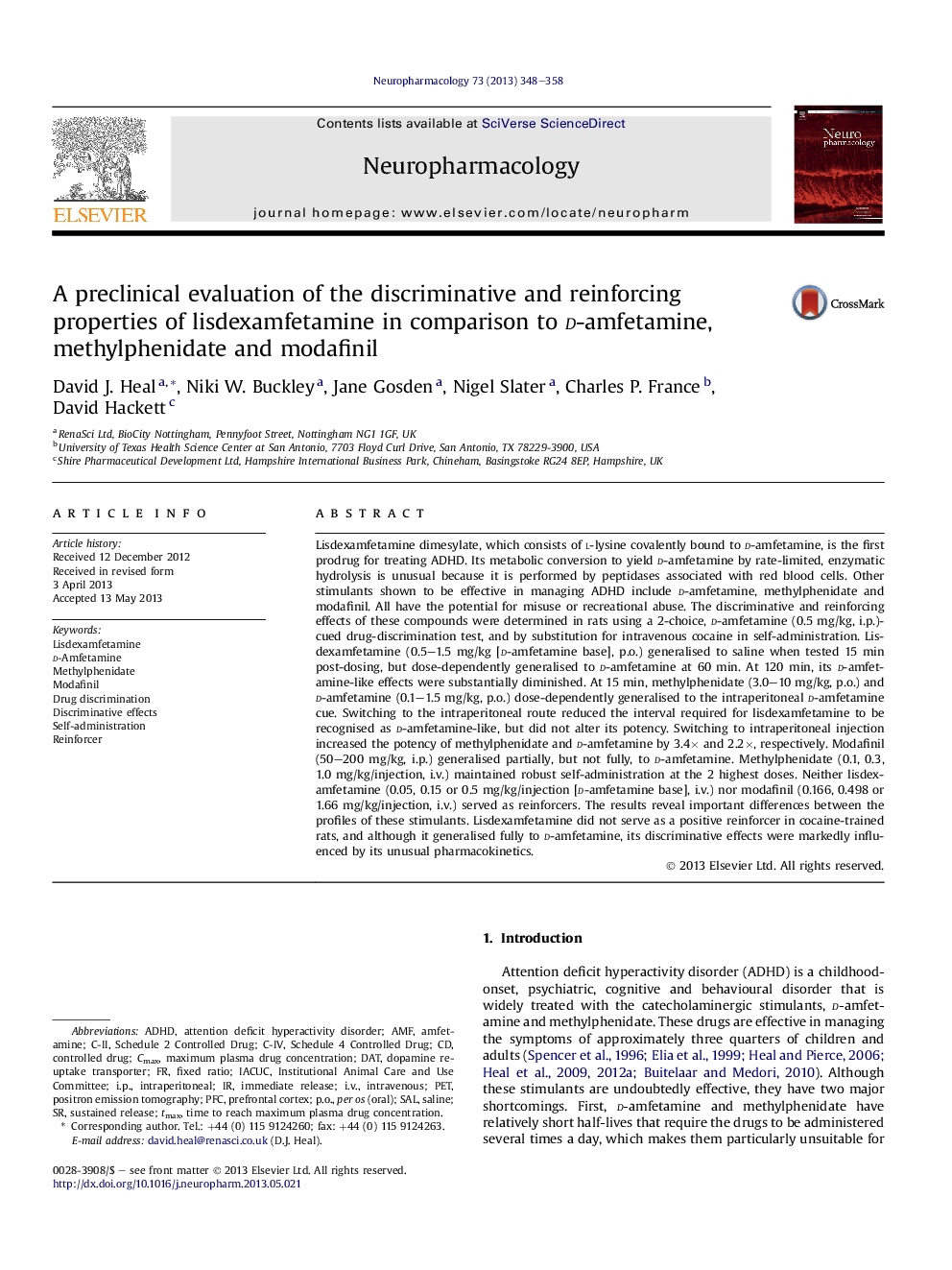| Article ID | Journal | Published Year | Pages | File Type |
|---|---|---|---|---|
| 5814965 | Neuropharmacology | 2013 | 11 Pages |
â¢Discriminative and reinforcing effects of lisdexamfetamine (LDX) determined in rats.â¢LDX's unusual pharmacokinetics influence its ability to generalise to d-amfetamine.â¢LDX does not serve as a positive reinforcer in cocaine-trained rats.â¢LDX profiled against d-amfetamine, methylphenidate and modafinil.
Lisdexamfetamine dimesylate, which consists of l-lysine covalently bound to d-amfetamine, is the first prodrug for treating ADHD. Its metabolic conversion to yield d-amfetamine by rate-limited, enzymatic hydrolysis is unusual because it is performed by peptidases associated with red blood cells. Other stimulants shown to be effective in managing ADHD include d-amfetamine, methylphenidate and modafinil. All have the potential for misuse or recreational abuse. The discriminative and reinforcing effects of these compounds were determined in rats using a 2-choice, d-amfetamine (0.5Â mg/kg, i.p.)-cued drug-discrimination test, and by substitution for intravenous cocaine in self-administration. Lisdexamfetamine (0.5-1.5Â mg/kg [d-amfetamine base], p.o.) generalised to saline when tested 15Â min post-dosing, but dose-dependently generalised to d-amfetamine at 60Â min. At 120Â min, its d-amfetamine-like effects were substantially diminished. At 15Â min, methylphenidate (3.0-10Â mg/kg, p.o.) and d-amfetamine (0.1-1.5Â mg/kg, p.o.) dose-dependently generalised to the intraperitoneal d-amfetamine cue. Switching to the intraperitoneal route reduced the interval required for lisdexamfetamine to be recognised as d-amfetamine-like, but did not alter its potency. Switching to intraperitoneal injection increased the potency of methylphenidate and d-amfetamine by 3.4Ã and 2.2Ã, respectively. Modafinil (50-200Â mg/kg, i.p.) generalised partially, but not fully, to d-amfetamine. Methylphenidate (0.1, 0.3, 1.0Â mg/kg/injection, i.v.) maintained robust self-administration at the 2 highest doses. Neither lisdexamfetamine (0.05, 0.15 or 0.5Â mg/kg/injection [d-amfetamine base], i.v.) nor modafinil (0.166, 0.498 or 1.66Â mg/kg/injection, i.v.) served as reinforcers. The results reveal important differences between the profiles of these stimulants. Lisdexamfetamine did not serve as a positive reinforcer in cocaine-trained rats, and although it generalised fully to d-amfetamine, its discriminative effects were markedly influenced by its unusual pharmacokinetics.
